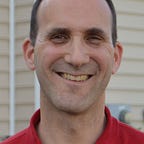Oh yes, ‘Rebuilt from Broken Glass’ is a story that, sadly, we need today
Remembering the 79th anniversary of Kristallnacht
This was first posted on the Purdue University Libraries blog.
Seven years ago, when I proposed to Fred Behrend that we work together to tell the story of a life that changed forever on Kristallnacht — the Night of Broken Glass — I never envisioned it would have much relevance today. I thought his memories and the history etched in the pages of his father’s diary and that of his own were just that … fascinating but somewhat dusty history.
How wrong I was.
Thank God, as we tonight mark the onset of Kristallnacht’s 79th anniversary, we have no reason to think we will see its likes here in America. Yet Charlottesville proved beyond doubt that Rebuilt from Broken Glass: A German Jewish Life Remade in America is relevant … beyond imagination.
Neo-Nazis, Ku Klux Klan and other white supremacists rallied at the University of Virginia in August, holding torches in the night, intentionally evoking images of Kristallnacht-like terror as they chanted “blood and soil” (an English rendering of a Nazi slogan) and “Jews will not replace us.”
On the night of Nov. 9–10, 1938, then 12-year-old schoolboy Fred Behrend walked to school in Cologne, Germany, to see his own terror and to see his childhood stolen from him. One magnificent synagogue was in flames, and then a second, and then what appeared to be the Jewish school itself seemed on fire as well (it was actually the attached synagogue). He didn’t understand why it was happening …
As described in Chapter 2 (Kristallnacht and Sachsenhausen):
Before November 7, 1938, no one knew the name of a 17-year-old Polish Jew named Herschel Grynszpan. However, his actions that day marked the beginning of a series of events that changed not only my life but that of every Jew in Germany. Grynszpan, a teenager just five years older than I, was living in Paris when the Nazis decided to arrest and deport all German Jews of Polish origin. Because Poland wanted no part of them, either, they were left stranded in a small town along the German-Polish border. Grynszpan was enraged when he received a postcard from his father informing him that his family members were among the 12,000 Polish Jews trapped in this nightmare.
Grynszpan reacted in a way his father never could have foreseen. He walked into the German Embassy in Paris, said he was a German resident, and requested to see an embassy official. The clerk on duty asked an embassy diplomat, Ernst vom Rath, to speak to him. Grynszpan walked into vom Rath’s office, pulled out a revolver, and shot him five times. Vom Rath died two days later.
This was an act that any respectable, civilized human being would condemn, regardless of the outrages being committed by the German government against the Jews. But the Nazis, not satisfied simply to remove Jews from the nation’s economic machinery, used the assassination as an excuse to proceed with the next step toward resolving the Jewish “problem.” They orchestrated a pogrom on the night of November 9–10, setting out to arrest all Jewish males from the ages of 14 to 83, with the goal of accelerating the widespread Jewish emigration already underway.
This would become known as Kristallnacht, the “Night of Broken Glass.” Besides conducting arrests, members of Hitler’s SA (Sturmabteilung) and SS (Schutzstaffel) beat Jewish men and women into a bloody mess, plundering their businesses, breaking their windows, and destroying everything in sight. They did not stop there. The Nazis burned or destroyed 267 synagogues and 7,500 Jewish businesses, and killed at least 91 Jews, according to the United States Holocaust Memorial Museum. The insanity stood in contrast to the old German saying, “Am Deutschen Wesen, Soll Die Welt Genesen” (The world will benefit from the German character and conduct).
Little did I realize that the insanity had already arrived at our front door in Lüdenscheid. I would only learn the details years later through conversations with my parents and reading my father’s diary.
The greatest terror of all was his father, back at the family home in Lüdenscheid, being arrested and taken to Sachsenhausen concentration camp. He was released on the condition the Behrends leave Germany forever. They escaped to the only place that would take them — Cuba — until their quota number was called to enter the United States.
So, yes, the book is a remembrance of a history that grows ever more distant, a Holocaust that cost 6 million lives that we must “never forget.”
But there are real-life Nazis out there still, trying to instill terror even though they are small in numbers. There are real-life white supremacists who think they are the master race.
Oh yes, Rebuilt from Broken Glass is a story that, sadly, we need today.
Rebuilt from Broken Glass: A German Jewish Life Remade in America
Purdue University Press, July 2017
[This] powerful book is the story of a boy whose sheltered childhood gave way to hell; of a hard-working family finding refuge, first in Cuba and then in the United States; and of growing up to become a businessman and author with a voice as empathetic on the page as in person. Rebuilt from Broken Glass is, after all, not simply a memoir about family and faith, but a work of history, written by an eyewitness.
–Philadelphia Inquirer
